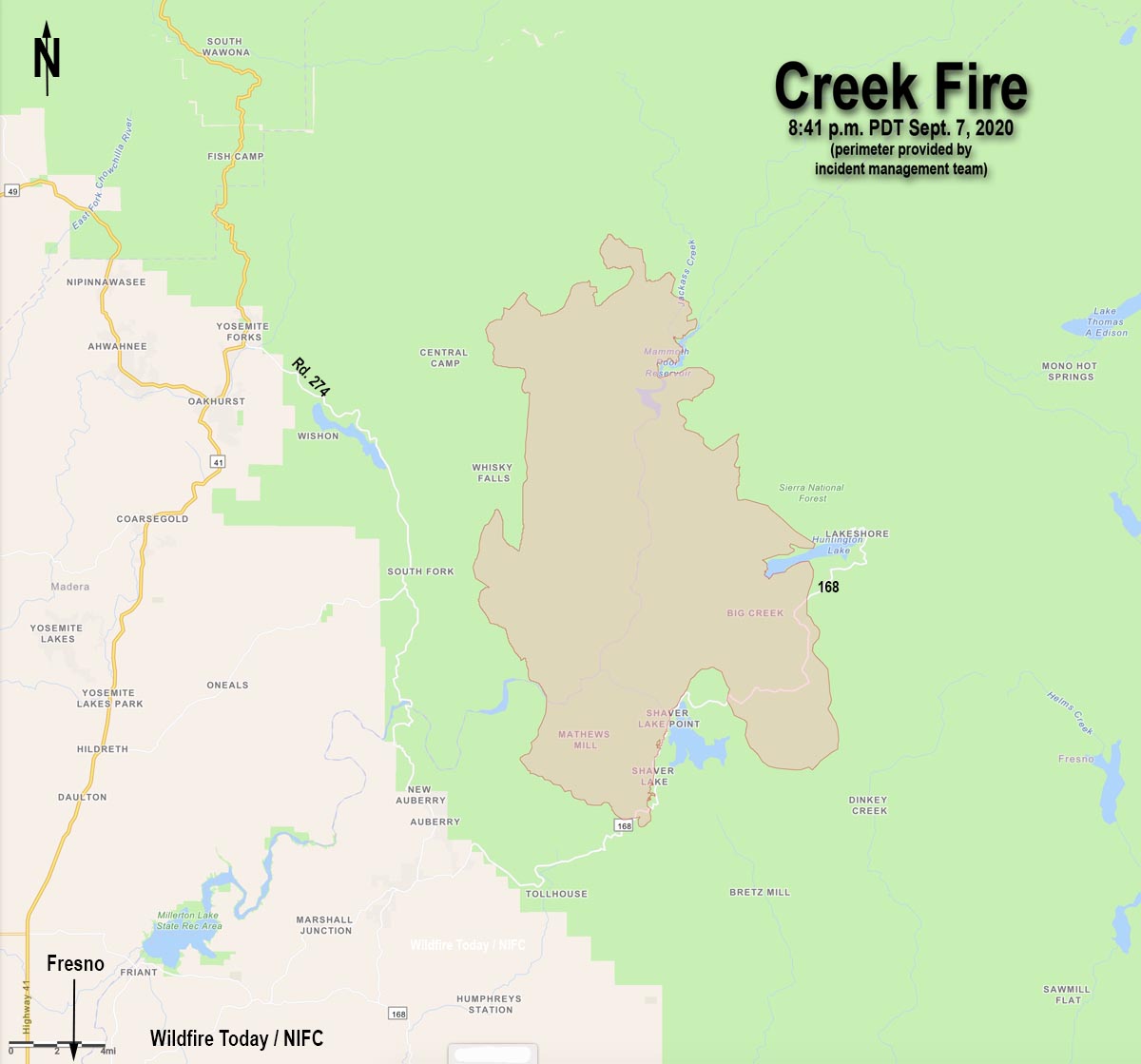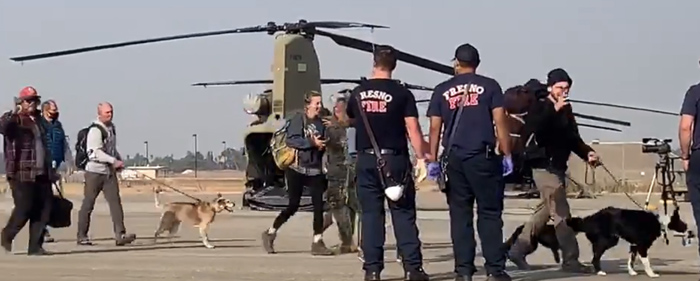
The Creek Fire 22 miles northeast of Fresno grew explosively Monday, and has now blackened 143,929 acres.
Military helicopters continue to rescue people that are becoming trapped as roads are blocked by the fast moving blaze. In addition to the 224 that were rescued by National Guard helicopters September 5 near Mammoth Pool Reservoir, about 100 more were rescued Monday night and Tuesday morning. The Guard and the U.S. Navy extracted people from the Edison Lake and China Peak areas and took them to the Fresno airport, the Fresno Bee reported. Helicopters that were transporting civilians included Blackhawks, Chinooks, and a Navy Seahawk.

From the Bee, September 8:
Five flights have taken place Tuesday, according to Maj. Jason Sweeney, a spokesman for the California National Guard. More were imminent.
In the latest flights, a U.S. Navy Seahawk helicopter returned 17 people and a dog to Fresno from Edison Lake and a National Guard twin-rotor Chinook helicopter flew back from Edison with 46 people and four dogs. The Navy joined the efforts a short time later, sending a rescue helicopter from Lemoore Naval Air Station to Edison Lake, and returned with 11 people.
Not all of the attempts to rescue people were immediately successful. On some missions poor visibility caused by smoke forced pilots to abort and try again later.
(To see all articles on Wildfire Today about the Creek Fire, including the most recent, click HERE.)
One of the helicopter pilots who rescued people trapped in the fire said in an interview posted at the Bee that he has been shot at while flying for the Army but, “[T]he stress and added workload of going in and out of that fire every time is by far the toughest flying I have ever done.”
At least 65 structures have burned, according to CAL FIRE, and another 5,300 are threatened.
Resources assigned to the Creek Fire include 10 hand crews, 82 fire engines, and 7 helicopters for a total of 846 personnel.
In normal times if there was not competition for firefighting resources nationally due to numerous fires burning at the same time, there would be between 3,000 and 5,000 personnel on a fire this size. In the United States 23,018 are working on fires today, according to the National Interagency Coordination Center. As another example, the Bobcat Fire that is threatening the wildland-urban interface in the Los Angeles area has 85 total personnel and no hand crews three days after it started.
Tuesday’s weather forecast for the Shaver Lake area calls for 79 degrees, 14 percent relative humidity, and wind out of the northwest or north at 10 to 20 mph gusting at 15 to 28 mph — and no chance of rain. Conditions will moderate Tuesday night, and Wednesday will bring 71 degrees, 20 percent RH, and 5 to 8 mph winds out of the southwest.

When I hear very experienced pilots make comments such as that, it makes me wonder if we are transferring too much risk onto aviation personnel. We’ve already had 6 fire aviation fatalities this year. Food for thought.
So, what would you do with the people on the ground? Leave them to perish? Lives are at stake, everyone is in danger in almost every rescue situation. The Coast Guard comes to mind.
The pilot (reportedly) said stress and added workload made his job the toughest. Interview firefighters, police, hand crews, fire camp personnel, forest rangers, etc., and they could describe with the same words what their job is like during these many major fires. Every job has risk. It doesn’t go unmanaged.